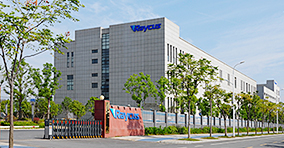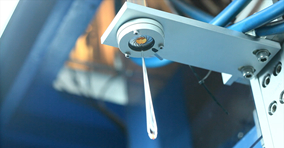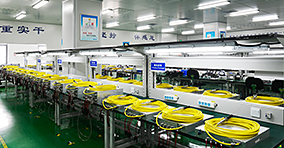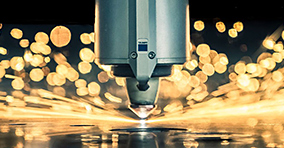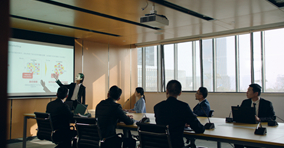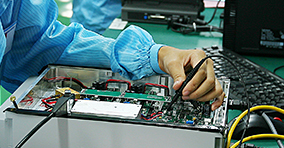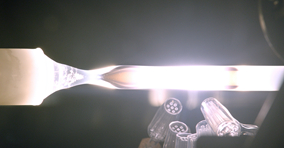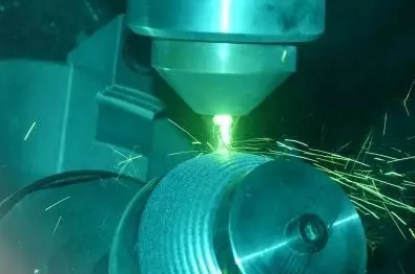Why laser cladding is so amazing!
What is laser cladding
Laser cladding means that the selected coating material is placed on the surface of the substrate to be cladding in different ways, and is irradiated with a thin layer of the surface of the substrate at the same time by laser irradiation. After rapid solidification, the degree of dilution is extremely low. The surface coating which is metallurgically combined with the substrate can significantly improve the abrasion resistance, corrosion resistance, heat resistance, oxidation resistance and electrical characteristics of the surface of the substrate, so as to achieve the purpose of surface modification or repair. The performance requirements have saved a lot of valuable elements.
Compared with surfacing, spray coating, electroplating and vapor deposition, laser cladding has the characteristics of small dilution, dense structure, good coating and substrate combination, suitable for cladding materials, large particle size and content change, etc. Therefore, laser cladding technology The application prospect is very broad.
Second, the characteristics of laser cladding process
1. The laser cladding layer is metallurgically bonded to the substrate, and the bonding strength is not less than 95% of the original substrate material;
2. The thermal influence on the substrate is small, and the deformation caused is also small;
3, a wide range of materials, such as nickel-based, cobalt-based, iron-based alloys, carbide composites, etc., can meet the requirements of different uses of the workpiece, taking into account the heart performance and surface characteristics;
4.The cladding layer and its interface are dense, with fine grains, no holes, no defects such as inclusion cracks;
5.It can repair valuable parts and molds of large equipment that are locally worn or damaged, and extend the service life;
6.The cladding process has good controllability and is easy to realize automatic control;
7. For damaged parts, high quality and rapid repair can be achieved, reducing downtime due to failure, and reducing equipment maintenance costs.
Third, the process principle of laser cladding
Laser cladding is the use of high-energy laser beam irradiation, through rapid melting, expansion and solidification, cladding a layer of material with special physical, chemical or mechanical properties on the surface of the substrate to form a new composite material to make up for Missing high performance. Can give full play to their advantages and overcome each other’s shortcomings.
Laser cladding can be roughly divided into two categories according to the supply method of cladding materials, namely preset laser cladding and synchronous laser cladding.
Pre-set laser cladding is to place the cladding material in advance on the cladding site on the surface of the base material, and then scan and melt it with laser beam irradiation. The cladding material is added in the form of powder, wire, and plate. . The main process flow of preset laser cladding is: pretreatment of substrate cladding surface-preset cladding material-preheating-laser melting-post heat treatment.
Preset laser cladding
Synchronous laser cladding sends the cladding material directly into the laser beam, so that feeding and cladding are completed at the same time. The cladding material is mainly fed in the form of powder, and some also use wire or plate for synchronous feeding. The main process flow of synchronous laser cladding is: pretreatment of substrate cladding surface-feeding laser melting-post heat treatment.
High loss, mining machinery expects technological innovation
At present, China is already a big producer, consumer and importer of mining machinery. Mining machinery is a general term for various types of equipment used in mine construction, mining, hoisting and transportation, crushing, grinding, screening, coal washing, beneficiation and roasting. The quantity is large and the surface is wide, and the working conditions are bad. The surface of the parts is abraded, abraded and scratched seriously. According to relevant statistics, about 1/3 to 1/2 of the world’s energy is consumed in friction. Failures account for 70% to 80% of equipment damage, with losses in the hundreds of billions of dollars each year. In particular, parts that work under high-speed, high-temperature, high-pressure conditions often cause parts to be scrapped due to their surface wear and tear, resulting in equipment deactivation.
In addition, the characteristics of mining machinery are huge, expensive, difficult to load and unload, and heavy maintenance work, so when the equipment is stopped due to wear and tear, it will cause huge economic losses. If the wear-resistant materials are improved to improve the machining accuracy of parts and components, and the reliability of the equipment structure is improved, the period of equipment wear will be postponed. Therefore, it is imperative to carry out remanufacturing or upgrading of mining machinery.
Laser cladding
In order to solve the problems of severe wear and corrosion of mining machinery parts, laser cladding technology came into being. This technology is a new technology with high economic benefits. It can prepare high-performance alloy surfaces on inexpensive metal substrates without affecting the properties of the matrix, which not only reduces costs, but also saves precious and rare metal materials.
Compared with surfacing, spray coating, electroplating, and vapor deposition, laser cladding has the characteristics of less dilution, dense structure, good combination of coating and substrate, more suitable cladding materials, and large changes in particle size and content.
This technology can remanufacture the broken parts of the shearer and roadheader, the fully-mechanized hydraulic support stainless steel column, the scraper, and the gear transmission box, especially the tapered end of the pick and the scraper are easy to wear Laser-reinforced coatings with metallurgical bonding, hard spots, and high-toughness metal materials are prepared on the parts, which greatly improves the average service life.


